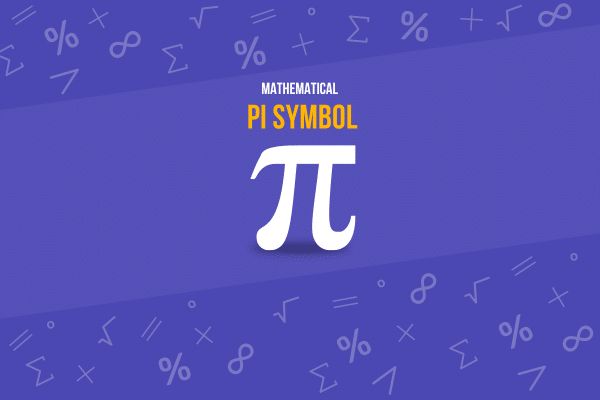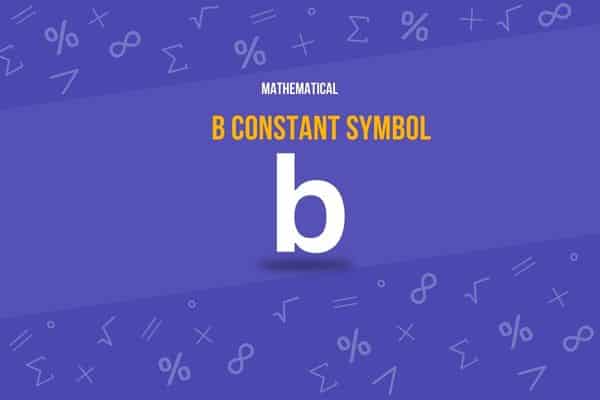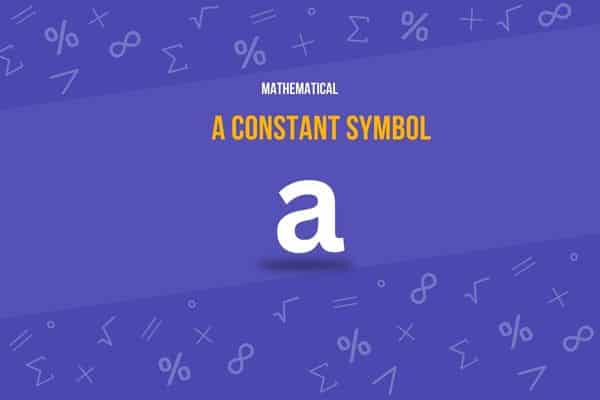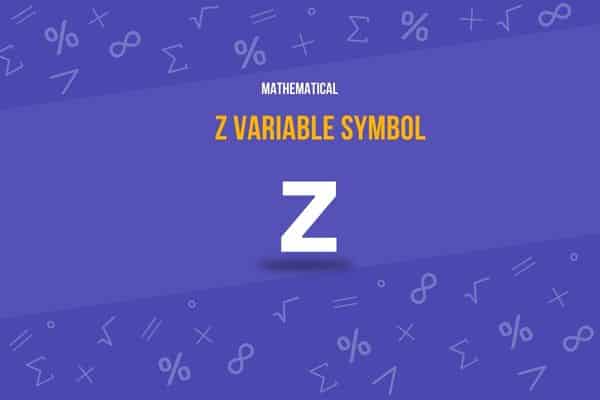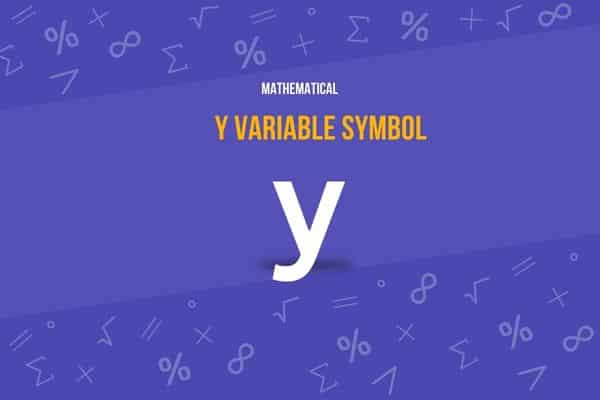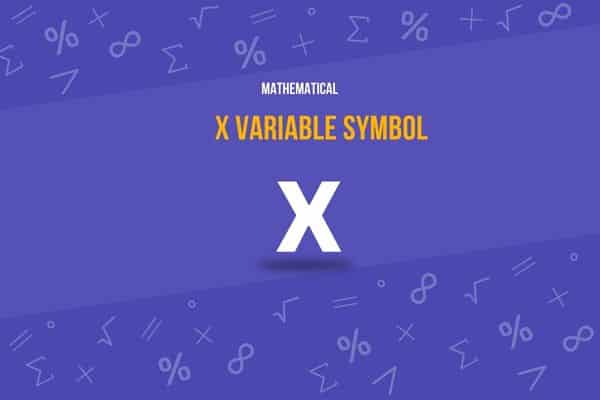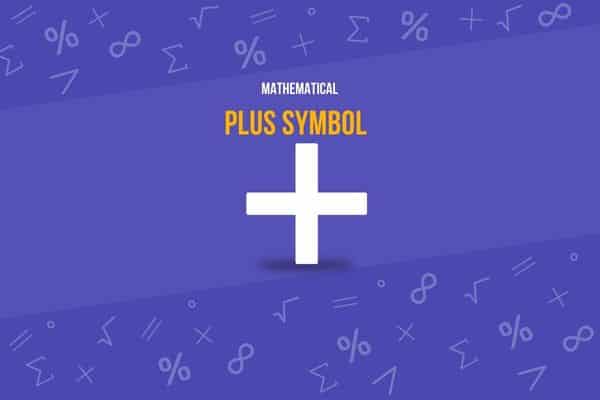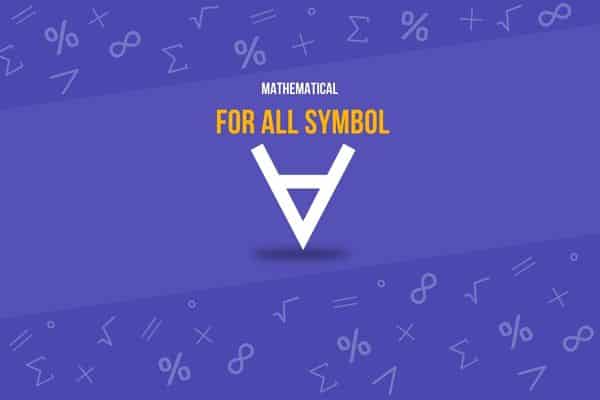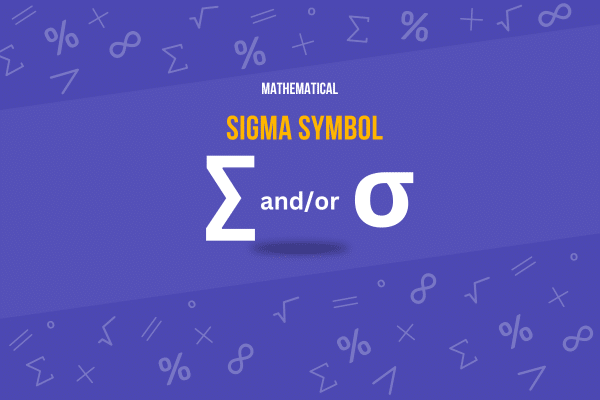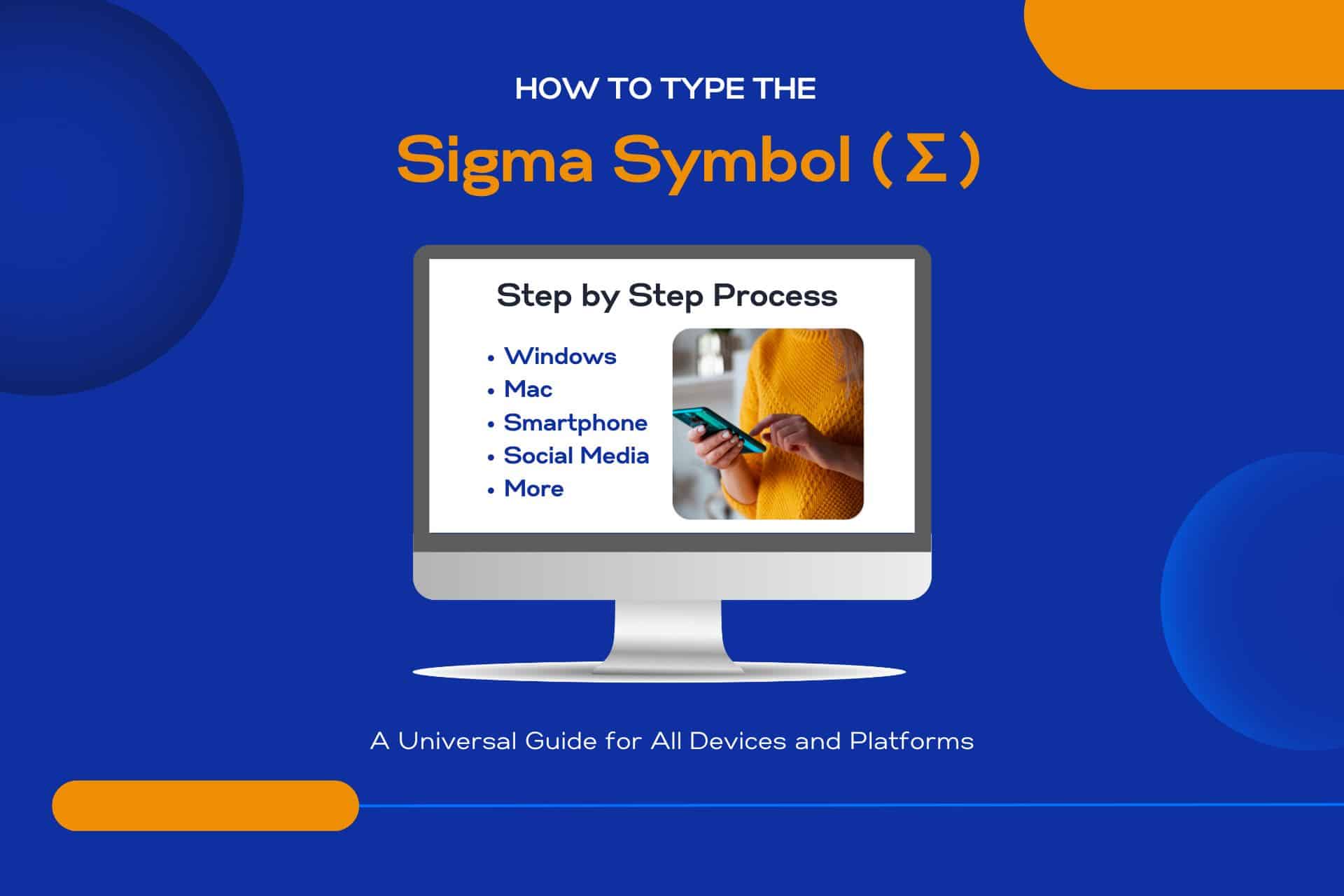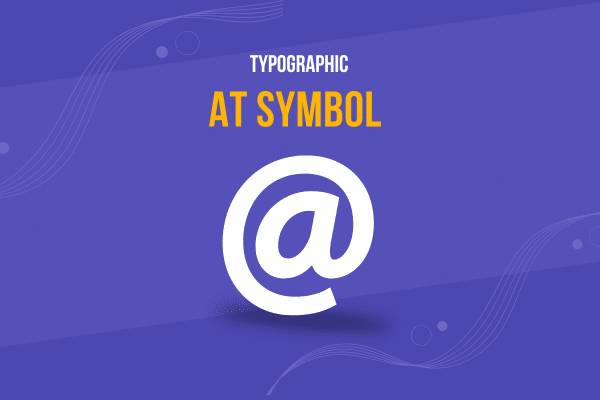What is the Asterisk Symbol?
Have you ever wondered about the story behind that little star-like symbol on your keyboard, commonly known as the asterisk? You’ve likely used it numerous times to correct typos in your messages, represent missing information, or in mathematical operations. Yet, its origin and variety of uses might surprise you. This unassuming symbol has a fascinating history, and its application ranges from literature to computer science.
Stick around as we unlock the mysteries of the asterisk symbol, unveiling its fascinating past, its multifaceted roles, and how it’s evolved to become an essential part of our daily communication. Trust us; you’ll see this everyday symbol in a new light!
Let’s get started!
Fast Facts
*
Asterisk Symbol
Asterisk Symbol (*) Overview
Here’s a detailed table that provides comprehensive information about the Asterisk Symbol (*).
| Attribute | Details |
|---|---|
| Symbol Name | Asterisk |
| Unicode | U+002A |
| Image | * |
| Brief Description | A typographic symbol used to denote multiplication, annotations, wildcards in computing, and more. |
| Unicode Version and Date of this Version | Unicode 1.1.0, released in June 1993 |
| Unicode Block Name | Basic Latin |
| Plane | BMP (Basic Multilingual Plane) |
| Script | Common |
| Category | Punctuation, Other (Po) |
| Bidirectional Class | ON (Other Neutrals) |
| Combining Class | 0 (Spacing, split, enclosing, reordrant, and Tibetan subjoined) |
| Character is Mirrored | No |
| HTML Entity | * or * |
| CSS | \002A |
| UTF-8 Encoding | 2A |
| UTF-16 Encoding | 002A |
| UTF-32 Encoding | 0000002A |
Here’s What You Will Find

Asterisk Symbol
The asterisk symbol (*) is a typographic character used in various contexts. Its origins can be traced back to ancient Greece, where it was called “asteriskos,” meaning ‘little star’. Over time, it has acquired several uses across different disciplines. In literature, it’s often used to denote a footnote or annotation. In mathematics and computing, it signifies multiplication or can be used as a wildcard character.
In telecommunications, an asterisk indicates a pause or break in a sentence. Even social media has a vital role in highlighting or censoring certain words. Despite its simple appearance, the asterisk is a versatile symbol, enriching our communication in subtle yet powerful ways.
Other Names
Apart from being commonly called the ‘asterisk’, this symbol carries several other names depending on its usage and context. It’s often called the ‘star’ symbol, especially when dialing phone numbers or entering passwords. In computing and programming, it’s known as the ‘wildcard’ character, given its ability to represent any character or set of characters.
The term ‘splat’ is sometimes used among typographers because the symbol’s appearance resembles a small splat. In a comic book context, it might be called a ‘snowflake’ or ‘sparkle,’ particularly when representing an action or sound effects. As diverse as its roles are, the names by which the asterisk is known reflect its varied uses and interpretations.
Asterisk Symbol Meaning
The asterisk symbol (*) is a versatile character with various uses in various fields, including mathematics, computing, and textual notation. As a mathematical symbol, the asterisk primarily denotes multiplication. For example, in many programming languages and mathematical contexts, 5 * 3 represents the multiplication of 5 and 3, yielding 15.
The meaning of the asterisk symbol varies widely depending on its context, yet its significance is universally recognized. It derives its name from the ancient Greek word “asteriskos”, which translates to ‘little star’. In traditional written text, an asterisk is often used to indicate footnotes or additional notes, providing readers with supplemental information without disrupting the flow of the main text.
It’s also used to denote a pause or break in poetry. In mathematics, an asterisk is a common symbol for multiplication. In computer programming and file systems, the asterisk plays the role of a wildcard, representing any string of characters, thereby helping in pattern matching and search operations.
Online, it’s frequently used to emphasize words or phrases, making the enclosed text bold or italicized. It’s also used to censor sensitive or explicit words. Despite its simplicity, the asterisk carries profound functionality, aiding clear and nuanced communication across many disciplines.
Asterisk Symbol Unicode
Unicode is a computing industry standard designed to consistently represent and manipulate text expressed in most of the world’s writing systems. Developed in conjunction with the Universal Character Set standard and published in book form as The Unicode Standard, it addresses the complexities of languages and scripts, ensuring that any character from any linguistic context can be encoded and interpreted correctly.
This makes it indispensable in our globally connected digital world. The asterisk symbol is assigned the Unicode value of U+002A, a universal standard that ensures no matter where you are or what device or platform you use, the asterisk will consistently be correctly recognized and displayed.
Asterisk Symbol Uses
The asterisk symbol (*), commonly recognized for its star-like appearance, serves numerous functions across different domains. Beyond its fundamental role in mathematics, the asterisk’s versatility allows it to adapt to various contexts, enhancing clarity and providing essential notation. Here are some of the primary uses of the asterisk symbol:
- Mathematical Multiplication: The asterisk is most commonly used to indicate multiplication in mathematics. For instance, writing ‘7 * 6’ implies the multiplication of 7 and 6, which equals 42.
- Footnotes and Annotations: In written texts, an asterisk is used to direct readers to footnotes or annotations. This use is particularly common in academic and professional documents, where additional information or references are provided at the bottom of the page or end of the document.
- Wildcard Character in Computing: Asterisks are used as wildcard characters in computing. This means they can substitute for any number or sequence of characters, particularly useful in search queries and programming.
- Censorship of Words: The asterisk is often employed to censor letters in offensive words in public texts, helping to soften the impact or adhere to media guidelines without completely removing the word.
- Emphasis in Text Messages: In informal digital communications, such as text messages and social media posts, asterisks emphasize a word or phrase, similar to italics or bold text in more formal typography.
- Markup Languages: In many markup languages, asterisks are used to create lists or to italicize or bold text. For example, in Markdown, wrapping a word with a single asterisk on each side (word) turns it italic.
- Astronomical Notation: An asterisk denotes a star’s conventional name in astronomy. It is also used in scientific literature to refer to different star designations within published papers.
- Linguistics: In linguistic texts, an asterisk is placed before a word or sentence to indicate that it is not used correctly or is hypothetical within a particular language’s grammar.
- Legal Documents: In legal documents, the asterisk is often used to indicate important terms or conditions elaborated upon in a footnote or endnote. This use ensures that specific stipulations or exceptions are highlighted clearly to readers, aiding in the transparency and understanding of legal texts.
Each of these uses highlights the asterisk’s remarkable adaptability and enduring relevance in professional and casual contexts, illustrating its utility beyond simple punctuation.
Asterisk Symbol Examples
The asterisk symbol (*) is a small but powerful tool used in various contexts to convey different meanings and functions. Its application spans from academic work to everyday digital communications, illustrating its versatility and significance. Here are some practical examples of how the asterisk is used:
- Mathematical Calculations: In an equation, the asterisk represents multiplication. For example,
8 * 5 = 40clearly shows that 8 times 5 equals 40. - Text Editing and Comments: In scholarly articles or books, an asterisk might direct the reader to a footnote at the bottom of the page or the end of the chapter, providing additional information or citations. For instance, a sentence in an academic paper might read, “The therapeutic techniques discussed* have proven efficacy in numerous studies.” The asterisk indicates further details that are available in the footnote.
- Search Queries: In computing, an asterisk is used as a wildcard character to replace a sequence of characters in search operations. For example, searching for
file*.txtin a computer’s file system might list all files that start with ‘file’ and end with ‘.txt’, such asfile1.txt,file2.txt, etc. - Censoring Text: The asterisk is commonly used to censor offensive words in public texts. For example, the word “obnoxious” might be transformed to “o**noxious” to obscure the offensive part, making it less explicit while still recognizable.
- Emphasis in Digital Communication: Asterisks often emphasize a word or phrase in informal digital communication, like chats and social media. For example, writing “That was amazing!” indicates that the word “amazing” should be read with an emphasis, mimicking the effect of italics.
- Programming and Markup Languages: In programming, the asterisk can denote pointers, repetition, or special commands, depending on the language. In Markdown, an asterisk is used to create bullet points or italicize text, enhancing the readability and organization of the content.
- Legal References: In legal documents, an asterisk might indicate a clause with specific significance or implications, guiding the reader to a detailed explanation elsewhere.
These examples demonstrate the asterisk’s adaptability and utility in various fields, making it an indispensable part of written and digital communication. Its ability to add clarity, emphasize, and signify importance is why it remains a prevalent and powerful symbol in numerous professional and casual contexts.
Why is the Asterisk Symbol Important?
The importance of the asterisk symbol lies in its incredible versatility and universal understanding. It transcends boundaries of language and discipline, conveying a range of meanings depending on the context in which it is used.
As a textual symbol, footnotes allow authors to provide additional, often critical, information. The asterisk’s capacity to denote emphasis or censor explicit content aids in respectful and appropriate communication online. Its role in mathematics and computing is indispensable, enabling calculations, programming functionalities, and pattern searching.
Essentially, this humble symbol, originating from ancient Greece, has been seamlessly woven into the fabric of modern-day communication, facilitating clarity and precision in everyday interactions. Its multifaceted use across varied domains makes it an integral part of our linguistic and symbolic toolkit.
Asterisk Symbol History
The asterisk symbol has a rich and intriguing history that dates back to the ancient Greeks. It was first known as “asteriskos,” translating to ‘little star’. The symbol was utilized in early Greek manuscripts, often to denote an omission or to mark a passage of particular importance. As the written word evolved and was systematized, the asterisk began to find its place in religious texts, such as the Bible, to indicate side notes or additional commentary.
During the Middle Ages, the asterisk was employed in poetry and other literary forms to denote line breaks or pauses. It was not until the rise of the digital age and the advent of computers and telecommunications that the asterisk took on more varied roles, such as its use in programming and as a wildcard character in computing. This historical journey has evolved the asterisk from a ‘little star’ on a Greek manuscript to a key player in our digital communications.
Asterisk Symbol Origin
The asterisk symbol originated from the ancient Greek word “asteriskos”, which translates to ‘little star’. This naming is thought to have been inspired by the symbol’s star-like appearance. The ancient Greeks used it in their texts to denote an omission or to highlight a particular section. Its use wasn’t confined to Greece, though. As language evolved and began to be more systematically written and distributed, the asterisk appeared in various texts. In the religious context, the asterisk was utilized in biblical texts to signify side notes or additional commentary.
This early adoption and consistent utilization throughout history significantly solidify the asterisk’s place in our contemporary written and digital communications. The asterisk has evolved from a humble ‘little star’ in ancient Greece, becoming an integral part of our linguistic and symbolic landscape today.
Evolution of the Asterisk Symbol
Over the centuries, the asterisk symbol has evolved remarkably in form and function. Its initial usage in ancient Greece primarily revolved around indicating omissions or highlighting text in manuscripts. The Middle Ages saw its extended use in poetry and literature, where it often represented line breaks or punctuated the text.
With the advent of the printing press, the asterisk became a key tool for denoting footnotes or additional commentary. In modern times, the asterisk has embraced the digital revolution, taking on new roles in computer programming as a wildcard symbol, mathematical operations to indicate multiplication and telecommunications for special functions.
Online communications have also become a tool for emphasis and self-censorship. The form of the asterisk has also varied over time, from the six-pointed symbol we mostly see today to variations that include five and even four points. This transformative journey of the asterisk symbol illustrates its adaptability and enduring relevance.
Asterisk Symbol In Everyday Life
Reflecting on the asterisk symbol, its versatility and adaptability stand out. Despite its simplicity, it fulfills a broad range of roles, providing a lesson in the beauty of multifunctionality. Its flexibility inspires us to be adaptable and wear many hats, reminding us that, like the asterisk, we can have multifaceted identities and roles.
We can incorporate the principles of the asterisk into our daily routines by embracing variety and adaptability. Just as the asterisk is comfortable in a text footnote, a math equation, or a computer code, we can strive to be comfortable and adaptable in different contexts and situations. Another lesson from the asterisk is its ability to convey sensitivity when used for self-censorship.
This encourages us to be mindful of our words and actions, particularly when interacting with others. Finally, the asterisk’s role in highlighting and emphasizing important content reminds us of the importance of focus and prioritization in our daily tasks and long-term goals.
Last Thoughts
In wrapping up our exploration of the asterisk symbol, it’s clear that this simple, star-like symbol significantly influences our daily communications, technological interactions, and pop culture. Its journey from ancient Greek manuscripts to the heart of modern digital communications is a testament to its adaptability and enduring relevance.
We encourage you not to stop here; many more symbols and signs are waiting to share their fascinating stories and unique applications. Dive into the world of symbols, and you may discover hidden meanings and surprising connections.
And suppose you’ve grown fond of the asterisk symbol through our exploration. Why not check out merchandise showcasing this versatile symbol – perhaps a trendy t-shirt, a creative poster, or even a beautifully designed mug?
Carry the little star with you as a reminder of the beauty of adaptability and the power of understated significance.
Before You Go
Don’t stop at the asterisk symbol—there’s a vast world of other intriguing symbols waiting to unveil their unique histories, diverse applications, and fascinating insights, so go ahead and continue your symbolic exploration!
If you found this exploration of the asterisk symbol enlightening, why not share it with others? Spreading knowledge is a wonderful way to spark conversations and deepen understanding among friends, colleagues, and enthusiasts.
Sharing this post can help others appreciate the significance and versatility of this seemingly simple mathematical symbol in various contexts. So, go ahead and pass this along—let’s spread the curiosity and expand our collective knowledge!














